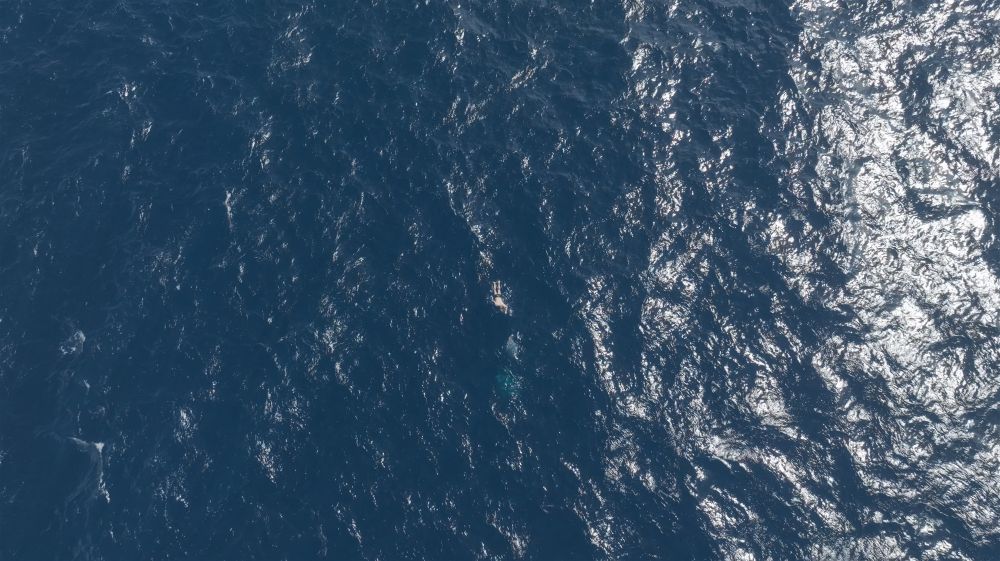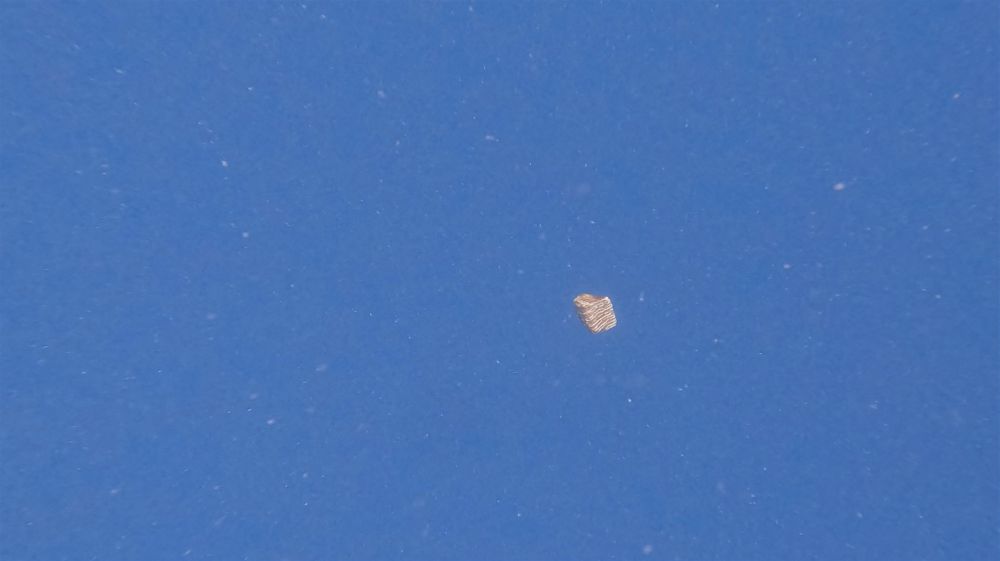Michael Pinsky
Mammoth, 2024
Filmed in Happisburgh and the Marshall Islands, this video work uses fragments of mammoth teeth from Happisburgh beach to tie together the quiet extinction of this iconic species through historic climate change, with the self-inflicted destruction of our world represented by the teeth bring dropped into the depths of the crater make by the largest ever nuclear detonation at Bikini Atoll.
Signed and numbered. Printed triptych of stills from video filmed at Happisburgh and Bikini Atoll in The Marshall Islands, South Pacific, featuring fragments of Southern and steppe mammoth teeth (c. 1,500,000 – 800,000 BCE)
Edition of 10 29 x 54 cm each
£1,250 (three prints)
Listen to Michael Pinsky explaining Mammoth 2024:



Michael Pinsky is a British artist celebrated for his socially-engaged and environmentally focused work, often addressing pressing issues such as urban pollution, climate change, and the impact of industrialization on natural and urban environments. His art spans a range of media, including installations, sculptures, public interventions, and multimedia works, which are often immersive and interactive, designed to provoke public awareness and encourage dialogue about the environmental challenges facing contemporary society. Through his projects, Pinsky blends art, science, and activism, aiming to disrupt conventional perceptions and inspire positive change.
One of Pinsky’s most well-known works, *Pollution Pods*, is a striking example of his approach to environmental issues. First created for the 2018 Starmus Festival in Norway, this immersive installation consists of five interconnected geodesic domes, each simulating the air quality and climatic conditions of a different global city—ranging from the clean, cool air of Tautra, Norway, to the polluted atmospheres of London, New Delhi, São Paulo, and Beijing. Visitors move through each pod, experiencing firsthand the contrast in air quality and temperature, allowing them to physically feel the effects of pollution in an immediate, visceral way. *Pollution Pods* has since been exhibited internationally, raising awareness about air pollution and climate justice issues across diverse audiences.
Another notable project, *Plunge*, transforms public spaces to bring attention to rising sea levels due to climate change. For this work, Pinsky marked the future projected sea levels on urban landmarks in cities such as London. These blue neon rings, affixed to famous structures like the Thames bridges, represent the heights that water would reach if global temperatures continue to rise unchecked. The simplicity of the installation, coupled with its powerful visual symbolism, serves as a stark reminder of the potential impact of climate change on human settlements, challenging city dwellers to consider the consequences of rising waters on their familiar surroundings.
Pinsky’s work often combines aesthetics with hard-hitting data, using scientific insights to inform his artistic installations. His ability to translate complex environmental data into accessible, experiential art underscores his commitment to environmental and social activism. By situating his work in public spaces, he also ensures that his messages reach a broad audience, fostering community engagement and a sense of collective responsibility. Michael Pinsky’s art invites audiences not just to witness environmental issues but to feel and reflect upon them, bridging the gap between intellectual understanding and emotional impact. Through his installations, Pinsky continues to push the boundaries of environmental art, advocating for sustainable futures and engaging the public in meaningful ways.

Palace of Westminster, London

The Fine Art Society, Edinburgh

